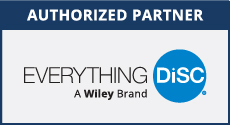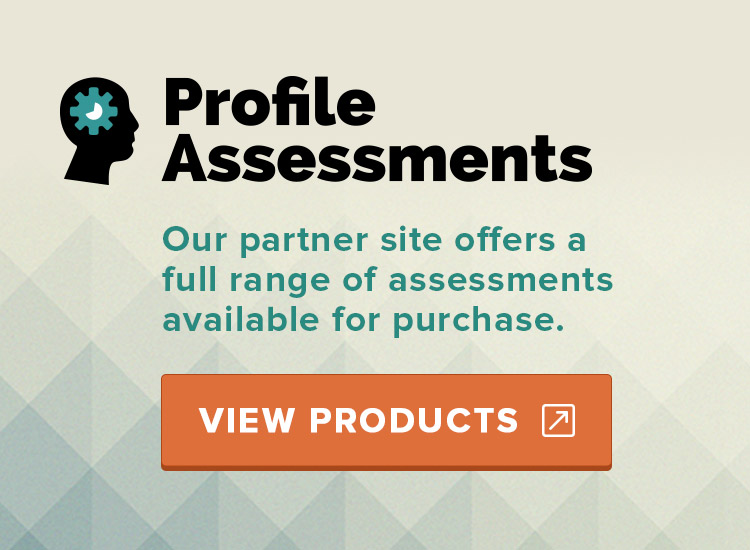Manage Conflict using DiSC Styles
 Conflict management can be uncomfortable. It triggers different behaviors in each of us, ranging from mean spirited destructive conflict to healthy and productive dialogue. Conflict is not a bad thing. In fact, it is important that a team engages in conflict to reach the best possible outcomes. The key to productive conflict is managing our approach in a way that promotes healthy behaviors and respectful communication.
Conflict management can be uncomfortable. It triggers different behaviors in each of us, ranging from mean spirited destructive conflict to healthy and productive dialogue. Conflict is not a bad thing. In fact, it is important that a team engages in conflict to reach the best possible outcomes. The key to productive conflict is managing our approach in a way that promotes healthy behaviors and respectful communication.
Gain insight into effective conflict management strategies using the Everything DiSC Productive Conflict assessment. Learn how to tap into healthy behaviors that drive productive dialogue and team engagement.
Cornerstone Principles to Manage Conflict Productively:
• Conflict is an inevitable part of workplace relationships so why not learn to leverage it as a team strength.
• Conflict interactions may be influenced by other factors: hierarchy, culture, office politics, etc. How might your ability to manage conflict be impacted by these factors?
• Your response to conflict is entirely in your own control. You cannot control how others respond to conflict.
• Learning about other people’s DiSC styles can help you understand conflict behaviors and how they might differ from your own.
DiSC Styles & Conflict:
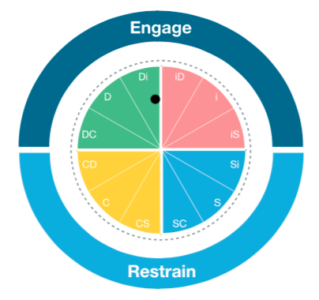 Conflict management using DiSC styles helps us gain insight into our personal conflict style and helps us understand conflict management DiSC styles of others. Learn how to easily recognize conflict management DiSC styles. Do you engage (actively participate) or restrain (hold back) during conflict? Those that fall into the top half of the DiSC model are likely to actively engage in a spirited debate. Those that fall into the bottom half of the DiSC model tend towards a preference to restrain. Understanding the differences in DiSC priorities promotes healthy debate. Listening without judgment is the first step to manage Productive Conflict.
Conflict management using DiSC styles helps us gain insight into our personal conflict style and helps us understand conflict management DiSC styles of others. Learn how to easily recognize conflict management DiSC styles. Do you engage (actively participate) or restrain (hold back) during conflict? Those that fall into the top half of the DiSC model are likely to actively engage in a spirited debate. Those that fall into the bottom half of the DiSC model tend towards a preference to restrain. Understanding the differences in DiSC priorities promotes healthy debate. Listening without judgment is the first step to manage Productive Conflict.
What Drives the D Style in Conflict?
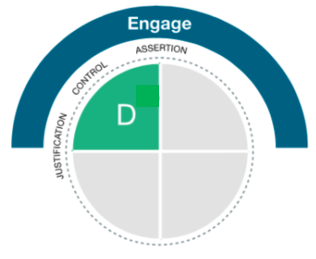 An individual with the D Style has a priority of Control and will want to take charge of the discussion and push strongly for their opinions. They also tend to Assert during conflict and are not afraid to tackle it head-on driving towards action. Lastly, they don’t take things at face value and seek Justification.
An individual with the D Style has a priority of Control and will want to take charge of the discussion and push strongly for their opinions. They also tend to Assert during conflict and are not afraid to tackle it head-on driving towards action. Lastly, they don’t take things at face value and seek Justification.
Strategies to Manage Conflict with the D Style:
-
-
- Don’t let the direct and blunt approach of the D Style keep you from contributing. Speak up! Your opinions matter.
- The D Style doesn’t want to get bogged down in details. Focus on the most important issues and align your input towards results.
- The D Style can be skeptical which may feel like you are being challenged. Keep your focus on the issue and not the person. Provide key data points that support the big picture objective.
- Patience is a challenge for the D Style. Don’t let their need to assert sway you to making a decision. Ask for what you need to fully understand before committing.
What Drives the i Style in Conflict?
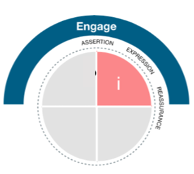
Those with an i preference like to keep things friendly and upbeat. It’s important to be able to Express thoughts and feelings. It’s also important for them to feel like they are on good terms so they may want Reassurance during or after the conflict. Individuals with the i style will Assert themselves as they are confident and optimistic and willing to share with the group.
Strategies to Manage Conflict with the i Style:
- The i Style prefers to ‘talk through’ issues. Although they might agree to something, don’t assume that’s the final answer. Be sure to review commitments before moving forward.
- It might be challenging to get a word in! The i Style likes to talk. Don’t hold back and wait for a pause in the conversation. Assert yourself and make your opinion heard.
- Conflict may feel confusing. The i Style tends to diverge in their thinking. Use your skills to bring the conversation together by converging on the key issues.
- The i Style can be passionate about their opinions. Be careful not to openly reject their input. Rather ask them to explain in more detail to gain context.
What Drives the S Style in Conflict?
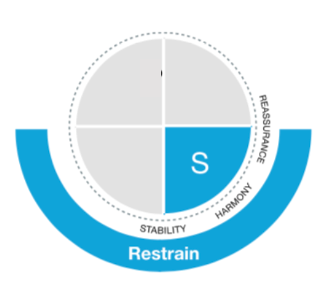
The S style team member prioritizes Harmony so conflict can be challenging. They may cave in quickly even if they don’t really agree with what you have to say. The S style may attempt to smooth things over to seek Reassurance that the relationship is intact. Stability is important so when tension arises, they will want to return to normal as soon as possible.
Strategies to Manage Conflict with the S-Style
- Give the S style the time and space to offer their opinions.
- Communication calmly and with sincerity.
- Don’t overpower the S style or dominate the discussion.
- Provide input that considers both data and people.
- Recognize the importance of team collaboration.
What Drives the C Style in Conflict?
Individuals with the C style place a priority on staying Objective. Decision making is based on logical reasoning and sticking to
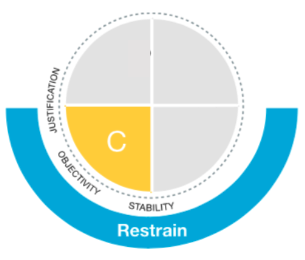 the facts. At the same time, they tend to back up claims and dig for answers to Justify a course of action. This team member also values stability and avoids the unpredictability of conflict. During a disagreement, they may concede simply to calm the waters.
the facts. At the same time, they tend to back up claims and dig for answers to Justify a course of action. This team member also values stability and avoids the unpredictability of conflict. During a disagreement, they may concede simply to calm the waters.Strategies to Manage Conflict with the C-Style
- Allow the C style time to think so they can analyze the situation.
- Remember they need time to process before making decisions.
- Make an effort to go over solutions carefully to search for flaws.
- Use logic rather than support to make your points.
- Be prepared for the C style’s discomfort with ambiguity. Provide context and the appropriate data points to substantiate your opinion.
-
Increased awareness of our thoughts during conflict helps us to recognize how our priorities may differ from another team member. Take time to listen without judgement, understand the others point of view, and thoughtfully respond in a way that builds a foundation for a productive dialogue.
Learn more about the Everything DiSC Productive Conflict Assessment
Learn More About Productive Conflict in the Workplace Team Building Programs
Contact us to learn more about how to put Productive Conflict into practice
 Learn More about Corporate Teams Profile Assessment offerings, visit our partner site: www.ProfileAssessments.com
Learn More about Corporate Teams Profile Assessment offerings, visit our partner site: www.ProfileAssessments.com
